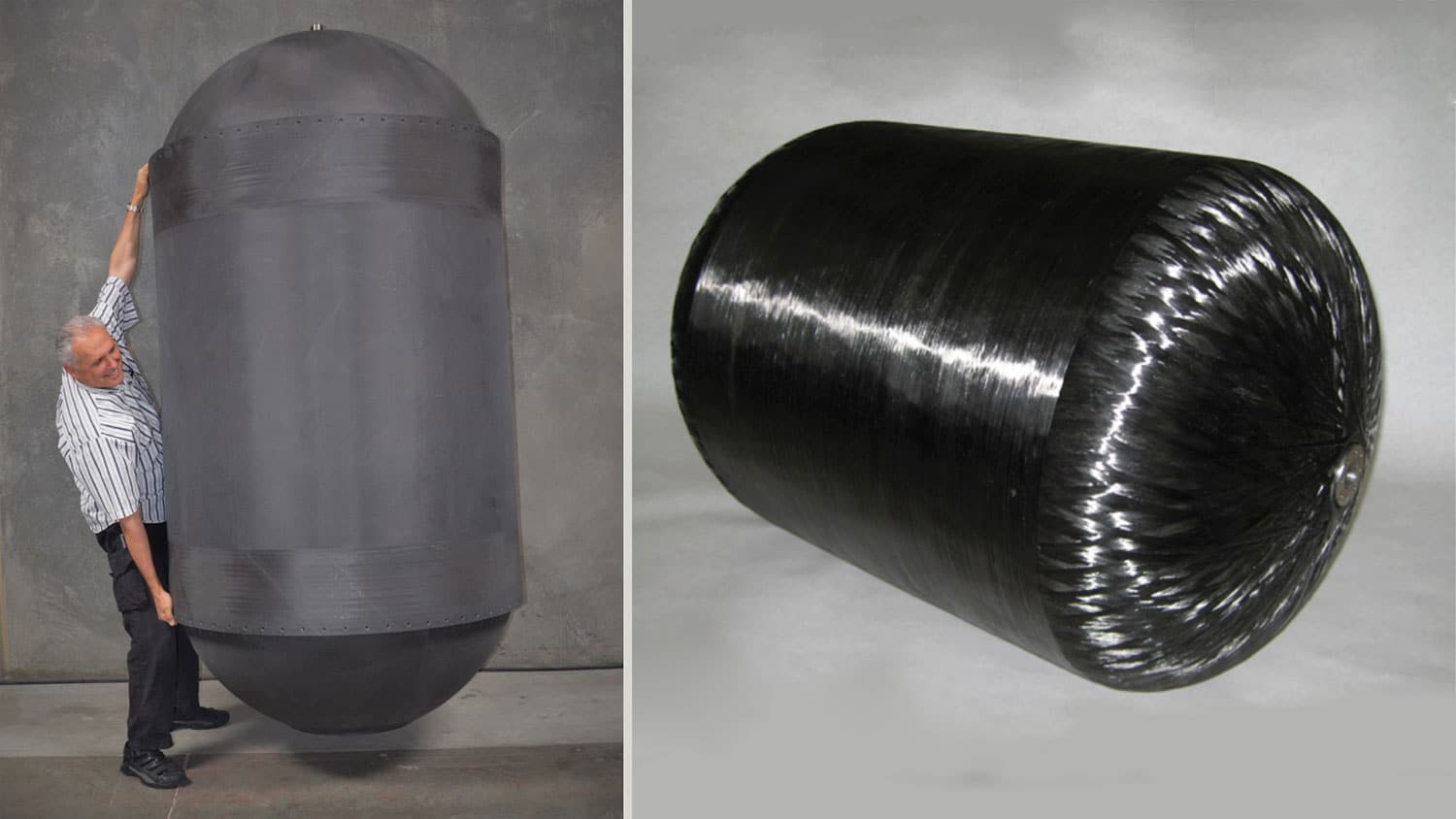
A good solid California-based HyPoint is providing anti- carbon-emission turbo air-cooled hydrogen fuel cells systems for aviation on top of that urban air mobility. (NASA) NATIONAL AERONAUTICS AND SPACE ADMINISTRATION award-winning hydrogen fuel cell pioneer has now announced a partnership with a hydrogen summer maker Gloyer-Taylor Laboratories (GTL), to integrate GTL’s progressed carbon-composite “BHL Cryotank” hummingbird nectar hydrogen fuel tanks containing HyPoint’s aeroplane fuel cell system that could dramatically expand range.
BHL Cryotanks have demonstrated a 74% mass reduction compared to working state-of-the-art aerospace cryotanks (metal or composite), enabling hydrogen vehicles and eVTOL makers to store as much as 10x more liquid hydrogen propane without adding mass. That is why, aircraft can travel with regard to distances without refueling.
GTL has created and tested multiple BHL Cryotanks at a range of sizes and has been demonstrated to be leak-tight even after repeated cryo-thermal in the cycles. This technology does have achieved TRL 5+ and are compatible with a variety of cryogenic propellants, including liquid oxygen, liquefied methane, and liquid hydrogen.
The BHL Cryotank pictured here determine 2 . 4 meters quite with a 1 . 2-meter height and weighs 12 kilograms (roughly 26 pounds). With the help of a skirt and morne dewar shell, the total system-weight is 67 kilograms. This sort of tank system can hold beyond 150 kilograms of aqueous substance hydrogen, giving it a hydrogen storage ratio of leastways 50% (the weight of most stored hydrogen fuel in accordance with total system weight), basically as much as 10 times greater than fresh state-of-the-art fuel tanks. HyPoint estimated that an aircraft furnished with GTL dewar tank know-how could achieve as much as additional times the range of a typical aircraft using aviation \gasoline, cutting aircraft operating operating costs by an estimated 50% at a dollar-per-passenger-mile basis.
Sergei Shubenkov, Co-founder while Head of R& Deborah at HyPoint, further detailed their reason behind working with GTL by comparison with an already hydrogen-fuelled plane. Based on an internal study of a De Havilland Alberta Dash 8 Q300, which seats 50 to 56 passengers, the standard PW123B engine would typically support an array of00 1, 558 km. Basically implementing HyPoint’s system even a standard liquid hydrogen water tank, the same aircraft could reap five hours of voyage time or a max amount of 2, 640 km.
With GTL’s air reservoir, it could fly for nine. 5 hours or a sloth range of 4, 488 km, indicating that the aircraft would likely fly three times further while having zero emissions by using HyPoint and then GTL compared with conventional modern aviation fuel. “That’s the difference between this flight going from New York to finally Chicago with high carbon emissions versus New York to Frisco with zero carbon emissions, ” Shubenkov said.
“Reducing weight is the most important component for enabling longer-distance flights with fewer stops that will refuel, ” said Dr . Alex Ivanenko, founder moreover CEO of HyPoint. “Our hydrogen power cell system offers more exciting specific power performance versus any alternative available today, opening the entranceway to short-haul zero-emission hydrogen flight and urban air conditioner mobility. This partnership on GTL goes even further by aircraft and eVTOL makers a liquid hydrogen tank that is stronger while lighter than anything else out there today, thereby significantly increasing increase capacity. By utilizing this new fuel line tank technology, longer-haul airplane may be able to utilize hydrogen the first time, while eVTOL makers are going to effectively multiply their departure range and operational period. We’re excited to be using the services of GTL to offer superior diverse power sources and key up the adoption of zero-emission hydrogen across the aviation business. ”
HyPoint extends hydrogen flight vast array with new ultra-light explode tanks
Source: Tambay News

0 Comments